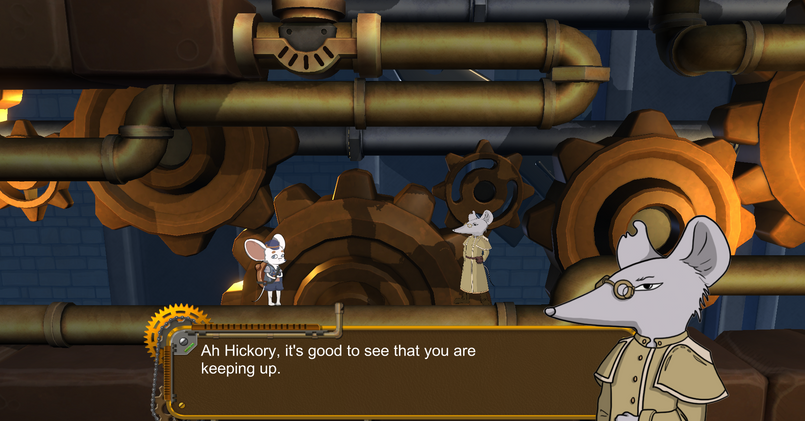top of page
hICKORY
Game Prototype & Systems Design
Play The Game
Overview
Hickory is a vertical-slice game demo that included a team of over 20 individuals.
As the project Lead, I worked alongside a team of Concept Artists, 3D Modelers, Visual Effects Artists, and Sound Designers. I was also responsible for communicating with the team leads, assigning tasks, and tracking the projects progress.
Description
Hickory is a puzzle platformer that follows the journey of a mouse named Hickory. Using a magical pocket watch to control time, Hickory must endure a climb up the hazardous clockworks of Tick-Tock, which is a malfunctioning clocktower that the mice call their home.
This project was created in a collaborative class at the Academy of Art University.
Team Size: 20+
Project Duration: 1+ year
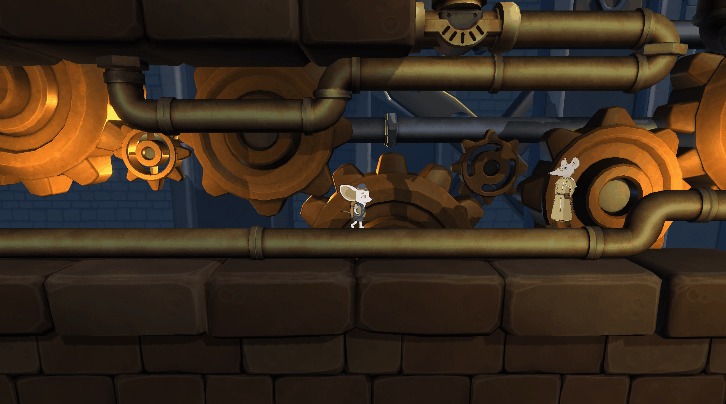
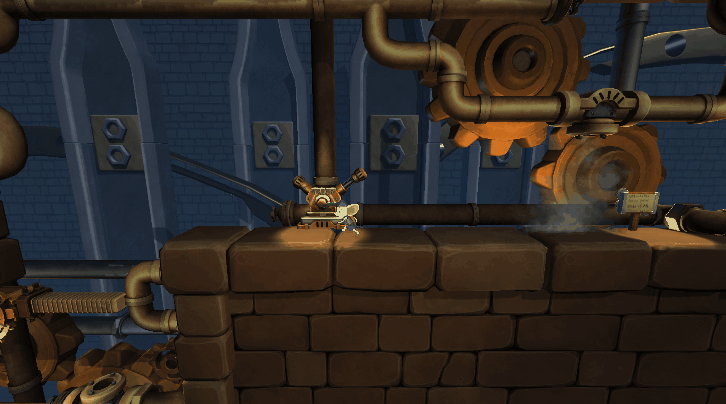
Game Design Role
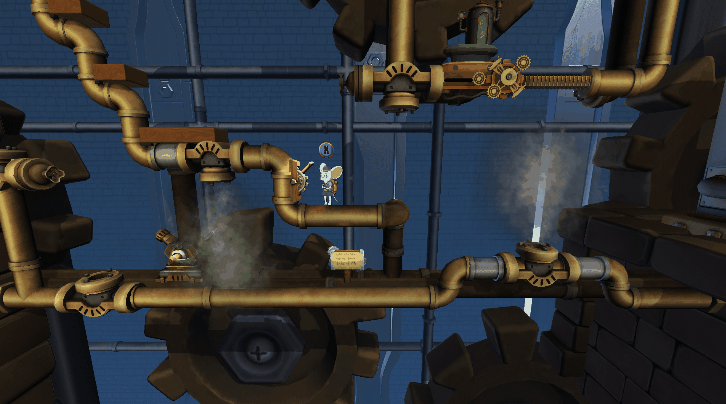

I was also the primary scripter, tasked with creating many of the game's mechanics and systems. I was responsible for Implementing:
-
A Modular Dialogue System.
-
A Modular Cutscene/Event System (which was capable of interacting with the Dialogue System).
-
Building Level Blockouts.
-
Player Movement/Controls.
-
Object Interaction and Player Abilities.
-
A Checkpoint System.
-
Animating both an intro and ending cutscene.
-
Recording player progress and resetting this data after restarting the game,
-
Uploading my progress through Perforce.
Experience
This was my first time collaborating on a game with a group of more than 20 people. So being given the opportunity to lead a team of that size was both exciting and intimidating. Though I absolutely loved working on this project, it was a pleasure to work alongside and get to know unfamiliar faces and I found the new challenges that this project brought before me extremely engaging.
As a project lead, one of the greatest struggles that I encountered was in creating a strong balance between refining work and knowing when to move forward to meet deadlines. An example of this centered around one particular background image for the games final cutscene. This cutscene is the climactic finale of the project, and we all wanted it to look as good as possible. For a period, this led to us fixating on details and revisions that proved to be unnecessary. Thankfully, through communicating with the team, we realized that it was time to move on. Later, as we reached the projects final milestone, we were extremely thankful that we chose to finalize that piece when we did. If we had not done so at that time, other critical elements of the final cutscene would have been neglected and suffered as a result.
I am extremely proud of the ending result, and am blown away with what the art team was able to accomplish. This experience proved to be a great reminder that I should always keep the timeline of a project in mind. Also to always communicate with the team, to ensure that they are happy and feel like the project is moving forward.
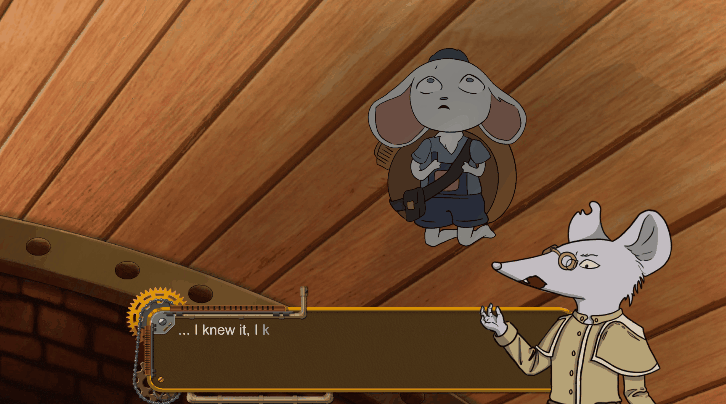

As a Game Designer, I also encountered a number of new challenges. I had never designed either a Dialogue system, or a dynamic Cutscene/Event system in Unity before. These projects intimidated me, because I knew that these systems also needed to be modular so that they could be used repeatedly all throughout the game.
Through time and effort, I was able to create systems that I believe work very well. They are not perfect; For example, currently designers must manually set a Speed variable which controls how fast the camera should zoom in or out, along with another variable that controls the speed at which the camera moves to a new focal target. This means that the camera might finish zooming in or out long before or after the camera stops panning to it's current focal target. To solve this, designers must spend a significant amount of time perfectly syncing these two variables. I would have greatly preferred to have created a system that calculates the camera's zoom speed so that it will always finish zooming in or out at the same time the camera finishes panning to it's current focal target.

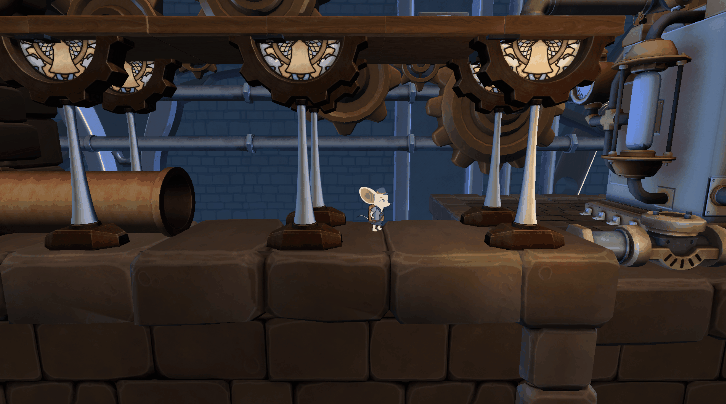
Also, learning how to use Perforce proved to be quite interesting. I had worked with it previously, but only on a very small scale, so I never had risk of creating conflicts with other user's uploads. This really opened my eyes to exactly how important version control is, making me extremely happy that I now have some more in-depth experience with it.
Full Video Walkthrough
Software Used

Unity
Game Engine

Perforce
Version Control

Photoshop
Assets & Visual Design
Credits
-
Brendan Reilly
(Project Lead & Game Design)
-
Devon Ferguson
(Concept Art Lead)
-
Letitia Longbons
(Concept Art Lead)
-
Tim Harris
(3D Modeling Lead)
-
Kentaro Tamai
(Game Design)
-
Ting Lee
(Game Design)
-
Angela Yen
(Concept Art)
-
Alice Nguyen
(Concept Art)
-
Yueh Lin (Isaac)
(Concept Art)
-
Chen Luo (Alex)
(Concept Art)
-
Chunyi Lai
(Concept Art)
-
Aries Liu
(Concept Art)
-
Helen
(Concept Art)
-
Billy Burger
(Visual Effects)
-
Jesse Rush
(3D Modeling)
-
Stefany Castro
(3D Modeling)
-
David Dorn
(3D Modeling)
-
Ashley Fortin
(3D Modeling)
-
Miaosen Li
(3D Modeling)
-
Alec Druet
(3D Modeling)
-
Rulon Feeney
(Music and Sound Design)
-
Shawn Liu
(Project Lead & Game Design)
-
Lauryn Henderson
(Concept Art Lead)
-
Ryan O'Conner
(3D Modeling Lead)
-
Mark McClurg
(Game Design)
-
Danica Li
(Game Design)
-
Megan Jerbic
(Concept Art)
-
Bob Chen
(Concept Art)
-
Phuc Nguyen (John)
(Concept Art)
-
Joanna (YinXue) Zhong
(Concept Art)
-
Jinheng Li
(Concept Art)
-
Nhi To Phung
(Concept Art)
-
James Delk
(Concept Art)
-
Matthew Wiley
(Visual Effects)
-
William Li
(3D Modeling)
-
Lanxin MO
(3D Modeling)
-
Lexuan Chen
(3D Modeling)
-
Parkar Fry
(3D Modeling)
-
Ryan Lee
(3D Modeling)
-
Hana Nguyen
(3D Modeling)
-
Thomas Ascough
(Music and Sound Design)
-
Cody Siccardi
(Voice Work)

bottom of page









